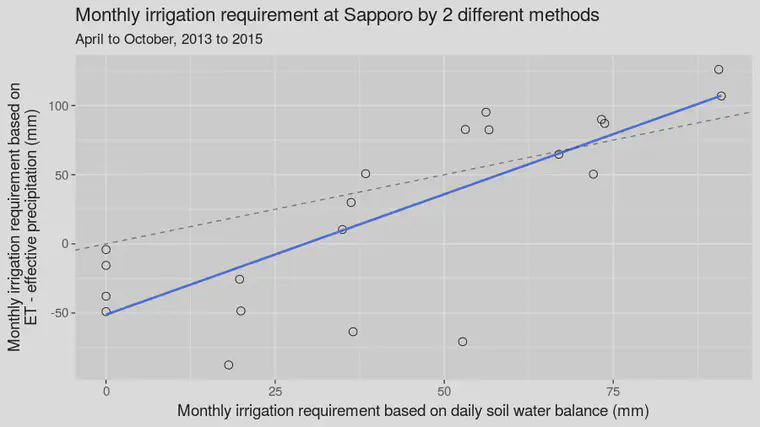Daily versus monthly calculations of ET and irrigation requirement
I showed how weather data can be used to calculate a daily soil water balance. One can adjust the rootzone characteristics, and the timing and amount of irrigation, so that the calculations are representative of what one wants to know.
By keeping track of what the soil water content would be on each day, given the actual weather conditions, and given the water holding capacity of the specified rootzone, one can find how much irrigation water would be required.
I’ve also made calculations using the standard method, which takes the evapotranspiration (ET) and subtracts the effective rainfall. I’ve used this method before to make calculations, and it made sense to me, but I’ve realized that this method doesn’t account for rootzone depth. For turfgrass, one should probably adjust the effective rainfall calculation for each site based on the rootzone depth.
I wondered if these methods give a similar result in predicting the irrigation requirement. I had daily data from Sapporo from 2013 to 2015, and I also got the monthly averages or totals for the same time period. I’ve made some calculations to find out.

I looked at the months from April to October in each year. That is a total of 21 months.
For the ET, the result is almost the same whether it is calculated daily, and summed for a month, or whether one calculates ET using the monthly data.

For the irrigation requirement, there is not a consistent agreement. I made these calculations based on an approximation of a loam soil with a 10 cm rootzone depth, a field capacity of 40% (by volume), with irrigation supplied to return the soil to field capacity when soil water content would drop below 20%.

I’ve got some more calculations to make about this. The standard method seemed pretty good to me until I started making the daily calculations.